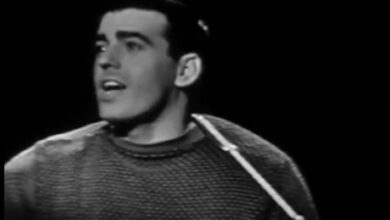A Timeless Union: Taylor Swift, Alison Krauss, and Vince Gill’s Soulful Rendition of “Red” at the CMA Awards
On November 6, 2013, Taylor Swift stepped into the spotlight at the 47th Annual CMA Awards—but she didn’t stand alone. She was joined by two of country music’s most celebrated figures, Alison Krauss and Vince Gill, for a spellbinding interpretation of her song Red. Unlike its radio version, the performance veered into emotionally rich territory, offering a heartfelt, acoustic rendition that echoed Swift’s country roots. This stunning collaboration received a roaring standing ovation and became one of the evening’s most talked-about highlights.
By that point in her career, Taylor Swift had already transitioned from country newcomer to global sensation. Having made the move to Nashville as a teenager with a notebook full of songs and dreams, Swift quickly built a name for herself through her gift for storytelling. Her 2012 album Red marked a turning point—melding country foundations with mainstream pop and rock influences. Yet, despite this sonic shift, Swift never lost the lyrical introspection that had defined her early years, and her CMA performance of the title track was a nod to those beginnings.
Co-produced by Nathan Chapman and Dann Huff, Red captured the complexities of love and longing through a tapestry of vivid metaphors and color imagery. Though the album cut was lively and rhythm-driven, the live version at the CMA Awards presented a complete reimagining. Krauss’s haunting harmonies and Gill’s restrained yet expressive guitar lent a tender quality to the performance, turning it into a meditative moment of musical intimacy that felt both familiar and brand new to fans.
The arrangement, stripped of pop embellishments, allowed every word and instrument to breathe. Krauss’s ethereal presence blended perfectly with Swift’s vocals, while Vince Gill’s guitar lines threaded emotion through each verse. Supporting musicians like Jerry Douglas on dobro and Sam Bush on bass added a warm, organic texture. At one point, Krauss subtly took over a verse—an unplanned, seamless shift that underscored the trust and connection among the performers. What could have been a standard awards show number evolved into a powerful display of unity and respect.
As the final notes drifted into the rafters of Nashville’s Bridgestone Arena, the crowd responded with thunderous applause. The camera captured a wave of emotion—fans moved to tears, artists applauding in admiration, and a sense of awe rippling through the venue. Unlike many overproduced numbers typical of televised events, this performance found strength in its restraint. It was intimate yet grand, understated yet unforgettable—a musical breath that everyone seemed to hold together before exhaling in collective amazement.
More than just a moment of show-stopping beauty, the collaboration carried symbolic weight. Within a year, Swift would make a full leap into pop with her next album, 1989, effectively closing a chapter on her country career. But her appearance alongside Krauss and Gill was no farewell—it was a heartfelt tribute to the community and style that nurtured her. It reminded fans and peers alike that, no matter where her sound ventured, her foundation would always be grounded in country’s storytelling soul.
Krauss and Gill brought their own legacies into the spotlight as well. Alison Krauss, with her unparalleled success in bluegrass and a record-breaking Grammy tally, carried the elegance of traditional acoustic music into every collaboration. Vince Gill, widely revered for his guitar work and sincerity, added nuance that resonated with authenticity. Together with Swift, their performance wasn’t just harmonious—it was symbolic, threading generations and genres into a single, beautiful narrative.
This reimagining of Red introduced the song to a broader demographic. While younger fans knew the polished studio version by heart, country traditionalists embraced this more intimate take. It showed how altering a song’s instrumentation and delivery could reveal fresh emotional layers. In this slower, soul-baring form, Red lost none of its power—if anything, its message became even more poignant and universal. It became a prime example of how context can redefine a song’s legacy.
Swift’s evolution didn’t mean erasure of her past. When she re-recorded Red as part of Red (Taylor’s Version) in 2021, echoes of this CMA performance lingered. Fans often point to the 2013 rendition as a defining moment in her live career—one where her artistry, adaptability, and reverence for tradition came together flawlessly. The quiet power of that night became a benchmark, not just for Swift but for modern country collaborations in general.
Ultimately, the CMA performance stands as a poignant chapter in both Swift’s career and country music’s ongoing evolution. It revealed that genre lines can blur without losing integrity and that powerful songs thrive in any form when backed by genuine artistry. The collaboration didn’t just reinterpret a track—it built a bridge across time, style, and audience. And in doing so, it reminded everyone watching that true musical moments don’t just entertain—they endure.



